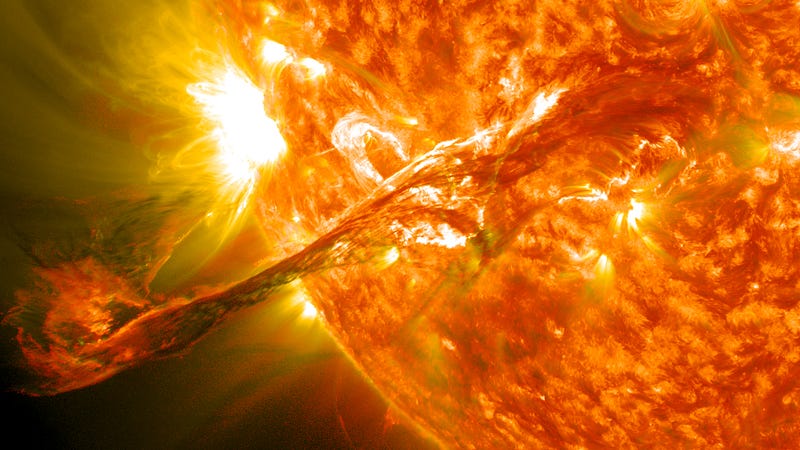Understanding the Impact of Coronal Mass Ejections on Earth
Written on
Chapter 1: The Solar Cycle and Its Effects
The Sun operates on an eleven-year cycle, where its activity peaks and then recedes. Currently, our star is on the rise, with a maximum expected by June 2025. This increase in solar activity is indicated by a growing number of sunspots—dark regions on the Sun's surface that are cooler than their surroundings and possess strong magnetic fields. Some of these spots can expand significantly, reaching diameters of over 150,000 kilometers, making them visible without a telescope.
These sunspots are not just fascinating phenomena; they are also the origins of solar flares and coronal mass ejections (CMEs), which can lead to geomagnetic storms on Earth, posing risks to our energy systems, radio communications, and satellites. Scientists continuously monitor the Sun for new spots, particularly focusing on those that may produce CMEs.
Section 1.1: Recent Solar Activity
Recently, a sunspot designated AR3370 drew attention for its unexpected activity. Initially considered minor, it produced a solar flare and a darker coronal mass ejection on July 14. This CME was labeled "dark" due to its relatively cool and dense plasma, making it appear darker against the Sun's bright backdrop. Shortly after, another CME originated from the sunspot AR3363, which was moving faster and eventually merged with the first, creating a rare phenomenon known as a "cannibalistic" CME that is set to impact Earth today.

[Photo: NASA Goddard Space Flight Center, CC BY 2.0, via Wikimedia Commons]
Section 1.2: What to Expect from Geomagnetic Storms
Both CMEs resulted from medium-strength C-class solar flares. While individually they wouldn't significantly disturb the Earth's magnetosphere, combined, they could trigger a minor geomagnetic storm (G1 or G2). Geomagnetic storms arise when the plasma clouds disrupt the Earth's magnetic field, leading to various effects. While G5 storms can severely damage infrastructure and satellites, the anticipated G1 or G2 storms pose minimal risk.
Chapter 2: Anticipating Future Solar Activity
As the solar cycle continues, we can expect more sunspots, flares, and CMEs in the coming years, potentially destabilizing the Earth's magnetosphere further. This year alone, five major geomagnetic storms (G4 and G5) have been recorded, significantly warming the thermosphere—our upper atmosphere layer— to the highest temperatures seen in two decades. This temperature increase leads to an expanded thermosphere, increasing aerodynamic drag on satellites.
The consequences can be severe, as seen when SpaceX lost 40 Starlink satellites last February due to a geomagnetic storm, highlighting the ongoing risks associated with solar activity.
This video discusses the potential for a significant solar storm approaching Earth. As we delve deeper into solar phenomena, it's crucial to stay informed about their implications for our technology and environment.
In this video, we explore whether solar storms could pose a threat to civilization. Understanding solar flares and coronal mass ejections is vital as we anticipate future solar activity.
Are there mysterious dark stars in space? A trio of researchers say yes. Data from the James Webb Space Telescope supports an intriguing hypothesis that dark stars may exist.
Thank you for reading! If you found this article insightful, consider supporting my work through claps, donations, or tips. Your contributions allow me to continue sharing valuable content.

